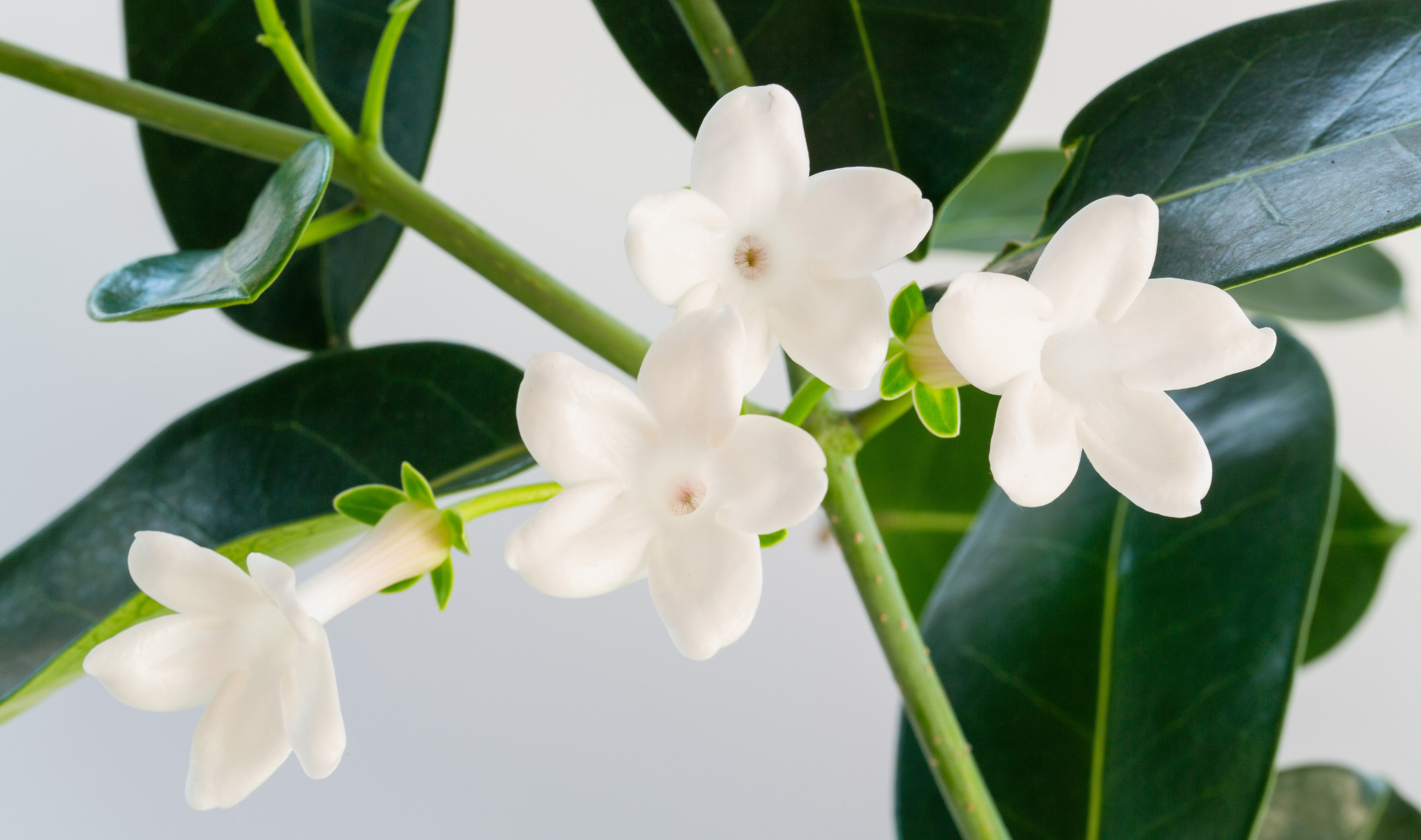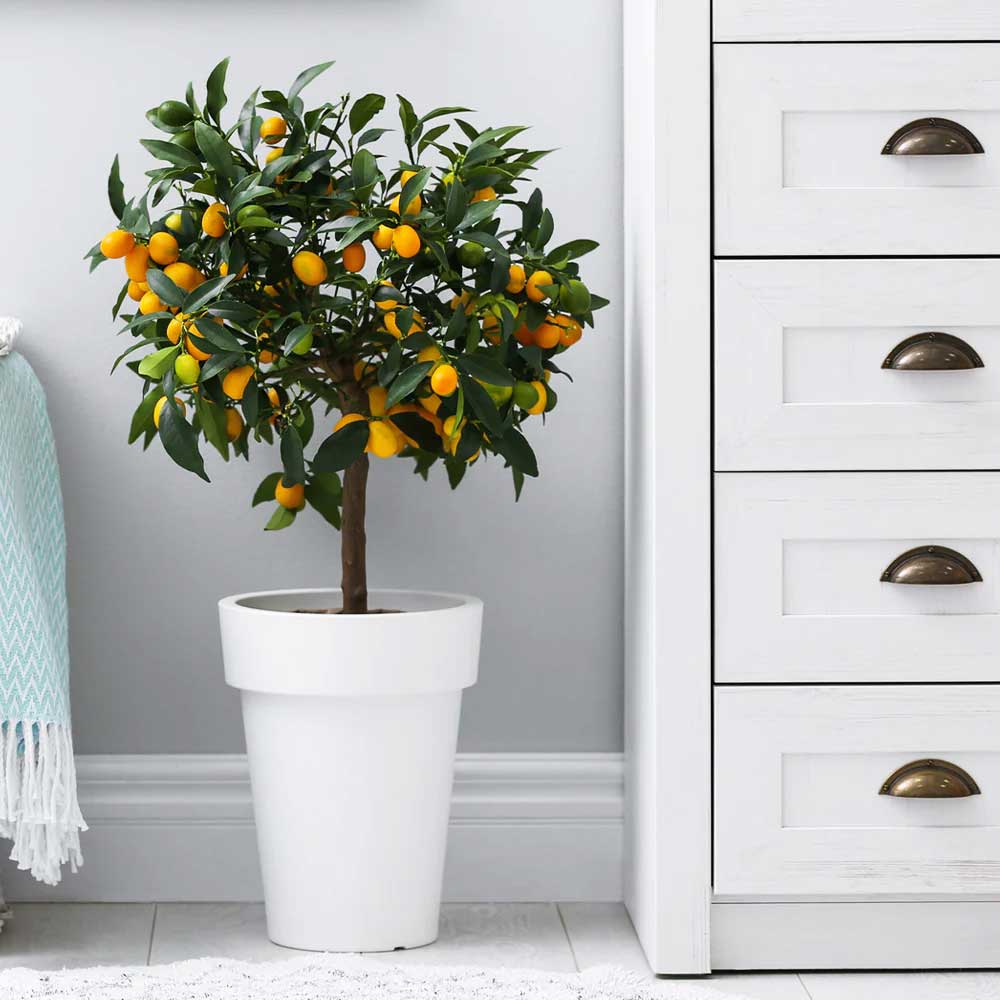5 Indoor Plants That People With Amazing-Smelling Homes Use to Scent Their Spaces Naturally
Want to scent your home with naturally fragranced foliage? Here's the plants to choose that will make your home smell beautiful

We all like our homes to smell nice–from freshly laundered sheets to scented candles–there are numerous ways to achieve this. However, fragranced indoor plants are a wonderful way to make your home smell good, naturally.
Many people enjoy the aroma of roses, jasmine, and other blooms in the garden, yet we forget to have scented plants indoors. Thankfully, there are a number of popular houseplants that can make your home smell amazing.
The best fragranced houseplants tend to be those that flower or fruit. Herbs with rich aromas are a good option too. Here are some of the best scented plants, with tips from experts on how to care for them.
1. Jasmine (J. officinale)

Jasmine has to be top of the list of indoor plants that make your home smell amazing. This scented beauty is often grown in the garden and around porches, for its climbing ability, pretty flowers and floral fragrance. However, Jasmine is suitable as an indoor plant too, and is the perfect flower to grow on a window sill.
'J. officinale (common white jasmine) is widely available almost all year round,' says William Davidson, author of Dr Houseplant. 'White Jasmine is at its most appealing when seen fresh, young, and green. The tiny tubular white flowers fill the plant nursery greenhouses with their unmistakable scent. If kept indoors, it will grow extremely fast and will need to be kept in a cool spot.
'Growing them indoors means that they can quickly get out of control, but this does not seem to spoil their short-term popularity stakes,' William adds. 'Cut back stems that have flowered as far as necessary, but not completely; they flower on growth made the previous season, so some new shoots should be left unpruned.
'All jasmines need to be in a position where they receive some direct sunlight every day. If possible, position these plants so that they can climb—they will need wires or trellis to do so. If there is no suitable space, provide them with some means of support within their container.'
The Livingetc newsletters are your inside source for what’s shaping interiors now - and what’s next. Discover trend forecasts, smart style ideas, and curated shopping inspiration that brings design to life. Subscribe today and stay ahead of the curve.
'While these plants are growing and flowering, give them plenty of water, enough to keep them thoroughly moist at all times. While they are resting, only provide them with enough water to prevent the potting soil from drying out completely.'
2. Coffee plant (Coffee arabica)
This is one for the serious growers, as Coffee Arabica, has a reputation for being high maintenance. Although, this mainly due to the fact that our dry homes are not its ideal environment. This plant will fair best in spaces with high humidity and bright indirect light, such as a sun room, where its fragrant flowers and berries can blossom.
'This is a fun plant to grow; it really is the plant that produces coffee beans, but will likely never produce enough to make a cup of coffee for you,' says Lisa Eldred-Steinkopf, author of Houseplants.
'Give it a bright spot for best results and keep your coffee plant well watered but not standing in water. High humidity is necessary to prevent the leaf edges from turning brown, so place your plant on a pebble tray.'
3. Kumquat trees (Citrus japonica)

These ornamental evergreens are one of the best indoor fruit trees. Although, loved for their glossy green foliage, Citrus Japonica is self-pollinating, so can even produce its sweet-smelling fruits inside.
In the right conditions, Citrus japonica will flower several times a year and its leaves can be infused to make tea. The fruits can also be used; either slice as a garnish for cocktails or soft drinks–or for the more adventurous–chop them to make marmalade.
'If you have a patio, balcony, or yard, your kumquat will be happiest outdoors spring-fall, when there’s no threat of frost, and can be transitioned indoors for winter,' says Bethany Lakatos, plant expert at Fast-Growing Trees.
'Otherwise, place your kumquat in a sunny South or Western facing window, where it will receive ample light. If you don’t have good lighting in your home, consider using a grow light 12-14 hours a day, with 8 hours off.
'Kumquats bloom in late spring to early summer with some varieties blooming more than once a year. Their blooms have a sweet, clean fragrance which will transport you to the balmy tropics even in the dead of winter.
'Terracotta containers filled with a well-draining citrus potting mix will keep the roots happy and free of soggy soil. Water when the soil is visibly dry, or dry about 2” down–and reduce watering in the winter, when the plant’s natural processes like photosynthesis have slowed down. Fertilize with a citrus-specific fertilizer (this is important because citrus has specific macro and micronutrient needs) spring-fall.'
4. Gardenia

Gardenias are known for their sophisticated white blossoms and intensely sweet smell and can be grown indoors, as well as outside. It's the sort of indoor plant that makes your home look more expensive.
'As a houseplant, gardenias require acidic soil and a careful hand when it comes to watering,' says Bethany at Fast Growing Trees. 'Choose a dwarf variety like Radicans or Veitchii, which can be displayed in an elegant pot with drainage holes.
'Avoid self-watering containers and skip putting rocks in the pot in favor of a well-draining potting mix formulated for acid-loving plants like azaleas or blueberries. Place your gardenia in bright, indirect light and water when the soil is visibly dry, or dry about two inches down into the soil.
'Gardenias like moist but not wet, soggy, or slowly draining soil. As winter daylight hours become fewer and cloudy skies reduce sunlight, your gardenia will naturally decrease its photosynthetic rate, and therefore use much less water than in spring and summer.
'It’s imperative to not overwater your gardenia in winter, but instead focus on keeping humidity levels at 50-60% to moderate dry, indoor air. Fertilize spring-fall with an acidifying formula by the rates on the package, but err on less rather than more. Be sure to deadhead regularly to ensure another flush of blooms.'
5. Tuscan Rosemary

Growing the best herbs to plant in a kitchen will not only keep you stocked with fresh culinary flavors, it will scent your home too. One herb with a particularly rich aroma is Tuscan Rosemary, which can be used to flavor food and drinks from roast lamb and homemade breads to gin cocktails.
'Some plants only smell good when they are in bloom but brush your hand over rosemary foliage and the savory scent will be with you all day,' says Bethany Lakatos at Fast-Growing Trees.
'Choose an upright variety like Tuscan Blue, which has small, aromatic velvety deep blue flowers in late spring. Place it in direct sunlight in a southern or western facing kitchen window. A well-draining potting mix and a pot with drainage holes is essential for root health,' continues Bethany. 'Adding perlite to the potting mix can encourage better drainage.
'Allow the soil to become slightly dry between waterings, and remove excess water from the drainage tray, as rosemary does not like being overwatered,' Bethany adds. 'Fertilize with a slow-release organic fertilizer for edible plants in spring and summer.
'In spring, remove any dead stems and prune the rest by a third, cutting just above each leaf node. Harvest the young, tender new growth at about the top 2-3” of each stem, which is the most flavorful for culinary use.'
There are some really good offers on Amazon right now for indoor plants, planters and all the paraphenalia you need for a successul indoor garden. It's never been a more affordable time to set up your fragrant botanical windowsill - see the whole selection on Amazon here.
And shop our edit of the best planters in the Amazon Prime Day sale right here.
Jacky Parker is a freelance lifestyle journalist and writer, producing a wide range of features for magazines and digital platforms. She has written for Livingetc and its sister titles, Homes & Gardens and Country Homes & Interiors for more than 15 years, both as a freelance contributor and as Acting Digital Editor and Acting Style Content Editor, regularly reporting on the latest interiors, gardens and wellness inspiration, speaking to experts in their respective fields, and discovering the best tips.
Jacky has also written for other publications, including Sunday Times Style, The Telegraph, Architectural Digest, House Beautiful, ELLE Decoration, Red, Grand Designs and more.



